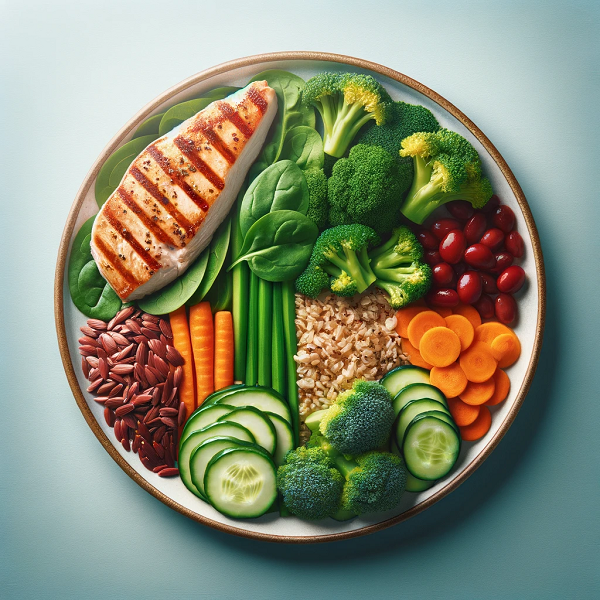
Managing type 2 diabetes is about more than just medications and monitoring blood sugar levels. It requires a comprehensive approach that focuses heavily on nutrition. Proper nutrition plays a crucial role in controlling blood sugar, improving overall health, and preventing complications that can arise from poorly managed diabetes. This article will explore how the right foods and meal choices can help individuals with type 2 diabetes manage their condition more effectively.
Understanding Type 2 Diabetes and Its Connection to Diet
Type 2 diabetes occurs when the body becomes resistant to insulin or does not produce enough insulin to maintain normal blood glucose levels. Since insulin plays a key role in allowing glucose to enter the body’s cells for energy, this resistance leads to high blood sugar levels, which can damage organs over time.
Nutrition is directly linked to how the body processes sugar. Carbohydrates, in particular, have a significant impact on blood sugar levels. However, the types of carbohydrates, portion sizes, and the balance with other nutrients such as fiber, protein, and fats all influence how blood sugar is managed. Making healthier food choices can help reduce blood sugar spikes and keep glucose levels stable.
Key Nutrients for Blood Sugar Control
To manage type 2 diabetes effectively, it’s important to focus on consuming nutrients that help stabilize blood sugar and promote overall well-being. Here are some of the most critical nutrients:
1. Fiber
Foods rich in fiber, especially soluble fiber, are beneficial for individuals with diabetes. Fiber slows the absorption of sugar in the bloodstream, which prevents sudden spikes in blood glucose levels. Some high-fiber foods include:
- Whole grains like oats and brown rice
- Legumes such as beans and lentils
- Vegetables like broccoli, carrots, and spinach
- Fruits like apples and berries
2. Protein
Protein is essential for helping individuals with type 2 diabetes maintain stable blood sugar levels. It can be found in both plant and animal sources, but choosing lean protein options is important. Good sources of protein include:
- Chicken, turkey, and other lean meats
- Fish like salmon and tuna
- Plant-based proteins such as tofu, tempeh, and lentils
3. Healthy Fats
Not all fats are harmful. Healthy fats, such as monounsaturated and polyunsaturated fats, can improve insulin sensitivity and help manage blood sugar. Sources of healthy fats include:
- Avocados
- Nuts like almonds and walnuts
- Seeds such as chia and flaxseeds
- Olive oil and other plant-based oils
Foods to Avoid
While it’s important to focus on what to eat, it’s equally crucial to understand which foods to limit or avoid to manage type 2 diabetes effectively.
1. Refined Carbohydrates and Sugars
Refined carbs, like white bread, pasta, and sugary snacks, cause rapid spikes in blood sugar. These foods should be limited, as they are quickly digested and lead to increased blood glucose levels. Instead, choose whole grain options or foods with a lower glycemic index (GI).
2. Sugary Beverages
Drinks like soda, fruit juices, and energy drinks are packed with sugar and can drastically increase blood sugar levels. Water, herbal teas, and unsweetened beverages are much healthier alternatives for hydration without adding to blood glucose spikes.
3. Processed and Fried Foods
Highly processed and fried foods, often containing unhealthy trans fats, should be avoided. These types of foods not only affect blood sugar control but also contribute to weight gain and increase the risk of heart disease, which is a common complication of type 2 diabetes.
Creating a Diabetes-Friendly Meal Plan
Creating a balanced meal plan is key to managing type 2 diabetes. A diabetes-friendly meal plan focuses on portion control, balanced macronutrients, and regular meal times to keep blood sugar levels in check. Here’s a simple approach to building a daily meal plan:
- Carbohydrate Counting: Learn to count carbohydrates and distribute them evenly throughout the day. For instance, if your meal plan allows 45-60 grams of carbs per meal, make sure to include a mix of carbs, fiber, and protein.
- Plate Method: Fill half of your plate with non-starchy vegetables like spinach, broccoli, or peppers. One-quarter of the plate should be lean protein, such as grilled chicken or fish. The remaining quarter can be reserved for whole grains or starchy vegetables, like brown rice or sweet potatoes.
- Snack Smart: Instead of reaching for chips or sweets choose snacks that stabilize blood sugar. Examples include a handful of nuts, carrot sticks with hummus, or a piece of fruit paired with a source of protein like yogurt or cheese.
- Mind Portion Sizes: Overeating, even healthy foods, can lead to weight gain, which negatively affects blood sugar control. Be mindful of portion sizes to prevent overconsumption of calories and carbs.
The Role of Glycemic Index in Food Choices
The glycemic index (GI) ranks foods based on how quickly they raise blood sugar levels. Foods with a high GI cause faster increases in blood glucose, while low GI foods lead to a slower rise. Diabetics benefit from choosing lower GI foods as part of their diet. Some low GI options include:
- Whole grain bread instead of white bread
- Sweet potatoes instead of white potatoes
- Lentils and beans over refined grains
Incorporating low-GI foods into meals helps reduce sudden spikes in blood sugar and ensures that glucose levels remain stable throughout the day.
The Impact of Weight Management on Blood Sugar
Achieving and maintaining a healthy weight is crucial for managing type 2 diabetes. Excess weight, particularly around the abdomen, contributes to insulin resistance, making blood sugar control more difficult. Studies have shown that even a modest weight loss of 5-10% of body weight can improve blood glucose levels and reduce the need for diabetes medications.
Hydration and Its Importance
Staying hydrated is often overlooked but is just as important as meal choices for diabetes management. Water is the best beverage for individuals with type 2 diabetes because it helps flush out excess sugar through urine. Additionally, staying hydrated can prevent dehydration, which is a common risk for people with high blood sugar levels.
Nutrition plays a central role in managing type 2 diabetes. A balanced diet rich in fiber, lean protein, and healthy fats can stabilize blood sugar levels and improve insulin sensitivity. Avoiding processed foods, refined sugars, and unhealthy fats helps reduce blood sugar spikes and prevent complications. Combined with regular exercise, portion control, and hydration, a well-structured meal plan can help people with type 2 diabetes lead healthier, more balanced lives.
References:
#type2diabetes #diabetesmanagement #diabetesdiet #bloodsugarcontrol #healthyfats #glycemicindex #diabetesnutrition #diabeticmealplan #managebloodsugar #diabetesfriendly

